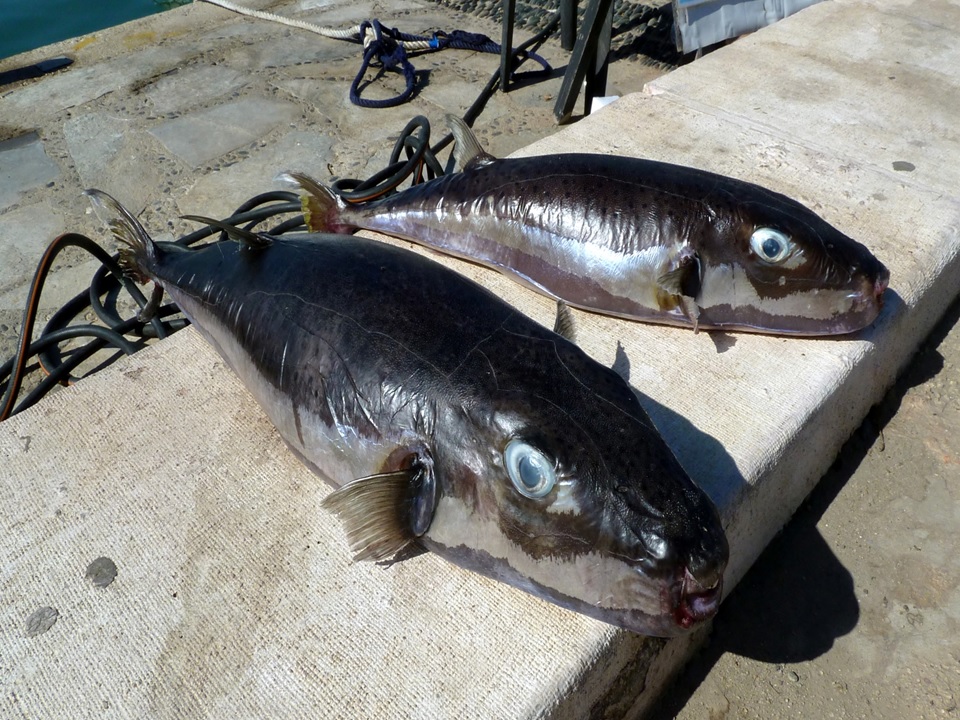|
Lagocephalus Sceleratus
''Lagocephalus sceleratus'' ( Gmelin, 1789), commonly known as the silver-cheeked toadfish, or Sennin-fugu ( ja, 仙人河豚), is an extremely poisonous marine bony fish in the family Tetraodontidae (puffer fishes). Habitat and distribution The species is common in the tropical waters of the Indian and Pacific oceans. In the Mediterranean Sea, it is an invasive species likely introduced via Suez Canal. It has been caught off the coasts of Israel, the south of Turkey, in Cyprus, the south coasts of mainland Greece, Crete, and Rhodes. In 2013 it was reported off the waters off Lampedusa Island in the central Mediterranean, and in 2015 off Malta and also in Montenegro, southeastern Adriatic Sea. Currently the westernmost record is from the Strait of Gibraltar. Greek authorities sent out an alert about the fish. A few days before 9th of February 2022, a specimen was caught by Croatian fishermen near the island of Pašman in the Adriatic with the Croatian Institute of Oceanogr ... [...More Info...] [...Related Items...] OR: [Wikipedia] [Google] [Baidu] |
Johann Friedrich Gmelin
, fields = , workplaces = University of GöttingenUniversity of Tübingen , alma_mater = University of Tübingen , doctoral_advisor = Philipp Friedrich Gmelin Ferdinand Christoph Oetinger , academic_advisors = , doctoral_students = Georg Friedrich HildebrandtFriedrich StromeyerCarl Friedrich Kielmeyer Wilhelm August Lampadius Vasily Severgin , notable_students = , known_for = Textbooks on chemistry, pharmaceutical science, mineralogy, and botany , author_abbrev_bot = J.F.Gmel. , author_abbrev_zoo = Gmelin , influences = Carl Linnaeus , influenced = , relatives = Leopold Gmelin (son) , awards = Johann Friedrich Gmelin (8 August 1748 – 1 November 1804) was a German naturalist, botanist, entomologist, herpetologist, and malacologist. Education Johann Friedrich Gmelin was born as the eldest son of Philipp Friedrich Gmelin in 1748 in Tübingen. He studied medicine under his father at University of T ... [...More Info...] [...Related Items...] OR: [Wikipedia] [Google] [Baidu] |
Pašman
Pašman () is an Adriatic island off the coast of northern Dalmatia in Croatia with an area of 60.11 km2, located to the south of Zadar, surrounded by the islands of Ugljan to the northwest, Iž to the west, and Dugi Otok and Žut to the southwest. The island is inhabited by 2,845 people, according to the 2011 census. There are 10 settlements on the island; Ždrelac, Banj, Dobropoljana, Neviđane, Mrljane, Barotul, Pašman and Kraj, belonging to the Municipality of Pašman, and Ugrinić and Tkon, belonging to the Municipality of Tkon. Among all islands in the Croatian archipelago it is Pašman that has the biggest green surface considering its total area. It is the 12th largest island in the archipelago by land area. It is also known to have the cleanest water in the Adriatic due to the constantly changing currents. History In addition to rare Stone Age finds, many Bronze and Iron Age fortifications confirm the early settlement of the island. Roman writers coun ... [...More Info...] [...Related Items...] OR: [Wikipedia] [Google] [Baidu] |
Fish Described In 1789
Fish are aquatic, craniate, gill-bearing animals that lack limbs with digits. Included in this definition are the living hagfish, lampreys, and cartilaginous and bony fish as well as various extinct related groups. Approximately 95% of living fish species are ray-finned fish, belonging to the class Actinopterygii, with around 99% of those being teleosts. The earliest organisms that can be classified as fish were soft-bodied chordates that first appeared during the Cambrian period. Although they lacked a true spine, they possessed notochords which allowed them to be more agile than their invertebrate counterparts. Fish would continue to evolve through the Paleozoic era, diversifying into a wide variety of forms. Many fish of the Paleozoic developed external armor that protected them from predators. The first fish with jaws appeared in the Silurian period, after which many (such as sharks) became formidable marine predators rather than just the prey of arthropods. Mos ... [...More Info...] [...Related Items...] OR: [Wikipedia] [Google] [Baidu] |

